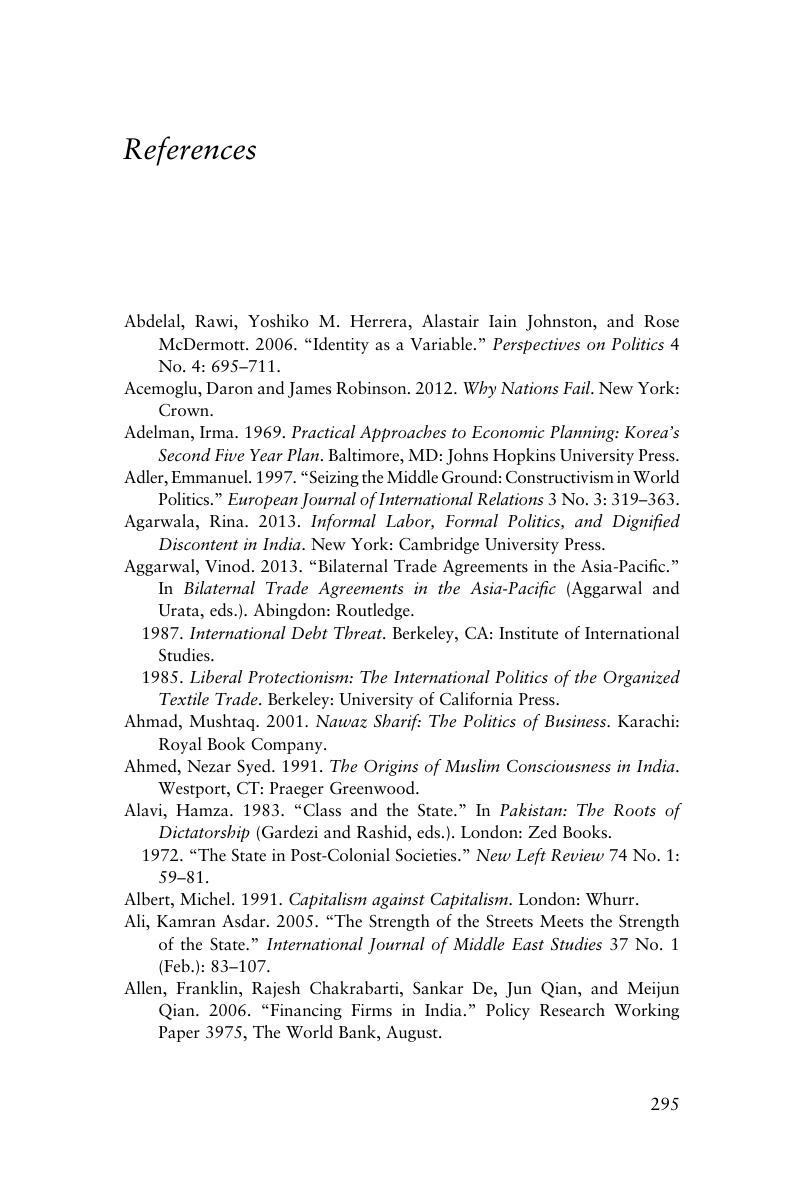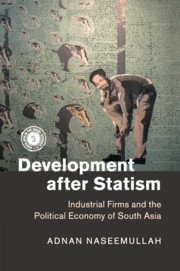Book contents
- Development after Statism
- South Asia in the Social Sciences
- Development after Statism
- Copyright page
- Contents
- Figures
- Tables
- Preface
- Acknowledgments
- Abbreviations
- 1 Introduction
- 2 Theoretical Framework
- 3 The Rise and Fall of Statist Governance in India
- 4 Industrial Finance after Statism in India
- 5 Labor Management after Statism in India
- 6 Indian Manufacturing and the International Economy
- 7 The Rise and Fall of Statist Governance in Pakistan
- 8 Industrialization after Statism in Pakistan
- Conclusion
- Book part
- References
- Index
- References
References
Published online by Cambridge University Press: 21 January 2017
- Development after Statism
- South Asia in the Social Sciences
- Development after Statism
- Copyright page
- Contents
- Figures
- Tables
- Preface
- Acknowledgments
- Abbreviations
- 1 Introduction
- 2 Theoretical Framework
- 3 The Rise and Fall of Statist Governance in India
- 4 Industrial Finance after Statism in India
- 5 Labor Management after Statism in India
- 6 Indian Manufacturing and the International Economy
- 7 The Rise and Fall of Statist Governance in Pakistan
- 8 Industrialization after Statism in Pakistan
- Conclusion
- Book part
- References
- Index
- References
Summary

- Type
- Chapter
- Information
- Development after StatismIndustrial Firms and the Political Economy of South Asia, pp. 295 - 318Publisher: Cambridge University PressPrint publication year: 2016



